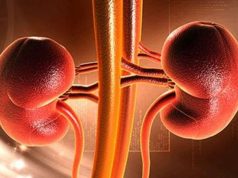Similar decline in liver fat fraction seen for sleeve gastrectomy, Roux-en-Y gastric bypass from surgery to one-year follow-up
MONDAY, Nov. 29, 2021 (HealthDay News) — Sleeve gastrectomy (SG) and Roux-en-Y gastric bypass (RYGB) are highly effective for reducing hepatic steatosis in patients with severe obesity and type 2 diabetes, with almost complete clearance of liver fat one year after surgery, according to a study published online Nov. 30 in the Annals of Internal Medicine.
Kathrine Aglen Seeberg, M.D., from the University of Oslo in Norway, and colleagues compared the one-year effects of SG and RYGB on hepatic steatosis and fibrosis in a single-center randomized controlled trial involving 100 patients with type 2 diabetes (mean body mass index, 42 kg/m2) from a tertiary care obesity center. Participants were randomly assigned in a 1:1 ratio to SG or RYGB.
The researchers found that from surgery to one-year follow-up, the decline in liver fat fraction was similar after SG and RYGB (â19.7 and â21.5 percent, respectively); at one year, almost all patients had no or low-grade steatosis (SG, 94 percent; RYGB, 100 percent). In 77 percent of patients, the enhanced liver fibrosis score category remained stable; however, at one year, 18 percent experienced worsening of fibrosis, with no substantial difference between the groups.
“RYGB and SG were both highly effective in reducing hepatic steatosis in patients with type 2 diabetes mellitus,” the authors write. “Both procedures stand out as appropriate treatment options to reduce the burden of nonalcoholic fatty liver disease.”
Abstract/Full Text (subscription or payment may be required)
Copyright © 2021 HealthDay. All rights reserved.








